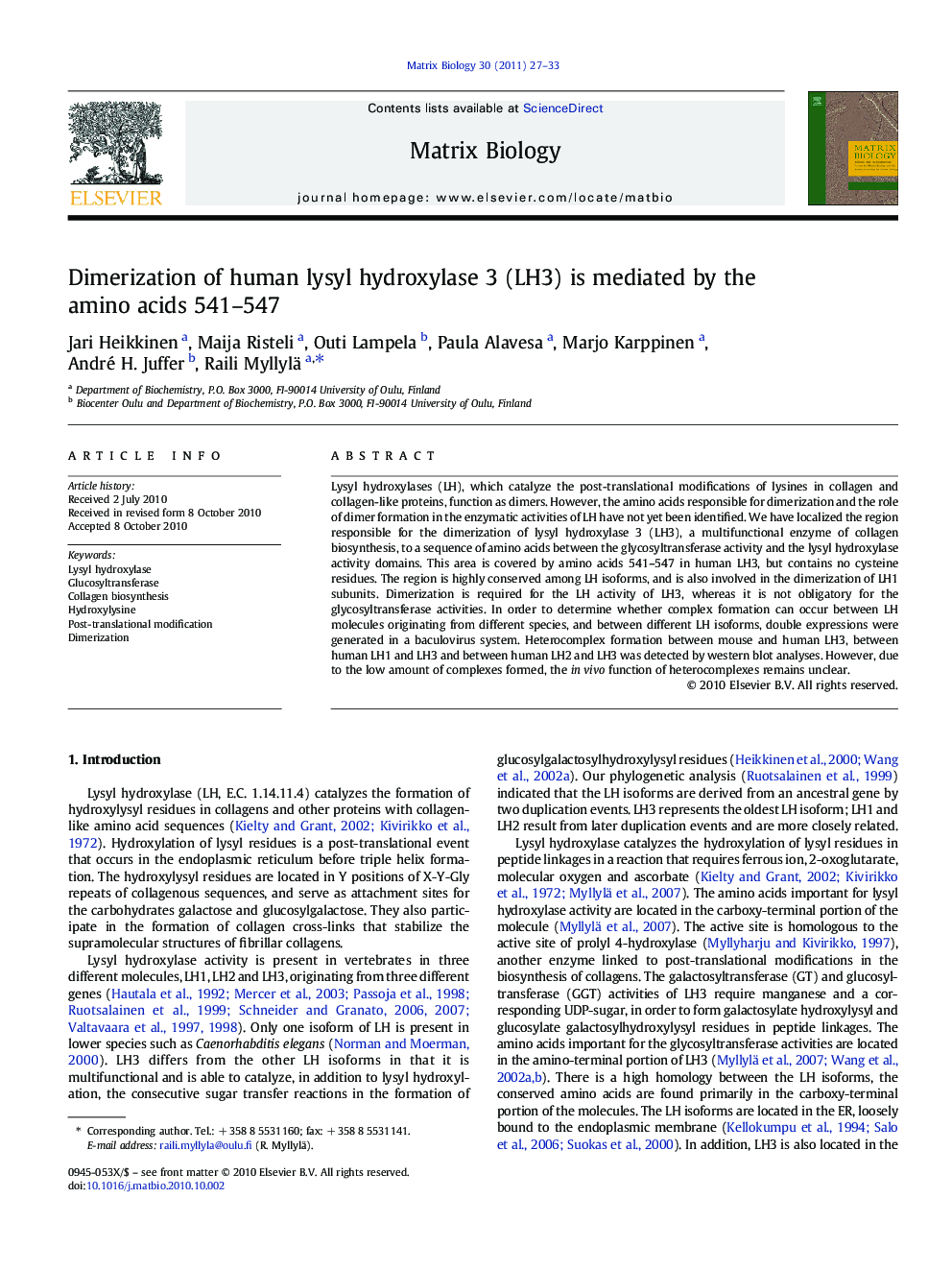| Article ID | Journal | Published Year | Pages | File Type |
|---|---|---|---|---|
| 10913867 | Matrix Biology | 2011 | 7 Pages |
Abstract
Lysyl hydroxylases (LH), which catalyze the post-translational modifications of lysines in collagen and collagen-like proteins, function as dimers. However, the amino acids responsible for dimerization and the role of dimer formation in the enzymatic activities of LH have not yet been identified. We have localized the region responsible for the dimerization of lysyl hydroxylase 3 (LH3), a multifunctional enzyme of collagen biosynthesis, to a sequence of amino acids between the glycosyltransferase activity and the lysyl hydroxylase activity domains. This area is covered by amino acids 541-547 in human LH3, but contains no cysteine residues. The region is highly conserved among LH isoforms, and is also involved in the dimerization of LH1 subunits. Dimerization is required for the LH activity of LH3, whereas it is not obligatory for the glycosyltransferase activities. In order to determine whether complex formation can occur between LH molecules originating from different species, and between different LH isoforms, double expressions were generated in a baculovirus system. Heterocomplex formation between mouse and human LH3, between human LH1 and LH3 and between human LH2 and LH3 was detected by western blot analyses. However, due to the low amount of complexes formed, the in vivo function of heterocomplexes remains unclear.
Keywords
Related Topics
Life Sciences
Biochemistry, Genetics and Molecular Biology
Cancer Research
Authors
Jari Heikkinen, Maija Risteli, Outi Lampela, Paula Alavesa, Marjo Karppinen, André H. Juffer, Raili Myllylä,
